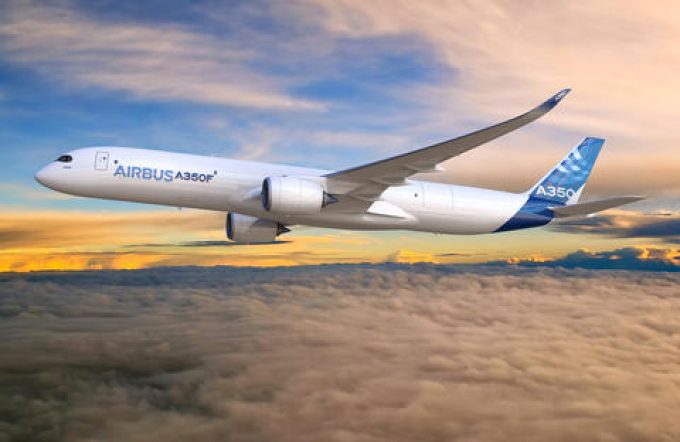Seven-week strike at Boeing finally ends
The seven-week strike at Boeing, that has exacerbated its already challenging production schedules, has finally ...
BA: WIND OF CHANGEMAERSK: BULLISH CALLXPO: HEDGE FUNDS ENGINEF: CHOPPING BOARDWTC: NEW RECORDZIM: BALANCE SHEET IN CHECKZIM: SURGING TGT: INVENTORY WATCHTGT: BIG EARNINGS MISSWMT: GENERAL MERCHANDISEWMT: AUTOMATIONWMT: MARGINS AND INVENTORYWMT: ECOMM LOSSESWMT: ECOMM BOOMWMT: RESILIENCEWMT: INVENTORY WATCH
BA: WIND OF CHANGEMAERSK: BULLISH CALLXPO: HEDGE FUNDS ENGINEF: CHOPPING BOARDWTC: NEW RECORDZIM: BALANCE SHEET IN CHECKZIM: SURGING TGT: INVENTORY WATCHTGT: BIG EARNINGS MISSWMT: GENERAL MERCHANDISEWMT: AUTOMATIONWMT: MARGINS AND INVENTORYWMT: ECOMM LOSSESWMT: ECOMM BOOMWMT: RESILIENCEWMT: INVENTORY WATCH

The air cargo market has been in recovery mode for about a year now, with IATA reporting positive gains since August 2023, as well as six consecutive months of double-digit industry growth, from December 2023 through May 2024 (and early reports for June 2024 show ongoing strong growth). With overall post-Covid international air transport capacity restoration (particularly passenger lower hold or belly capacity) more or less nearing completion, most industry pundits are expecting a very strong peak season in latter Q3/early Q4.
So where can shippers look for new air freight capacity opportunities to move international shipments in a potentially tight market?
Airlines have three levers with which they can regulate the flow of air cargo traffic over their networks: fleet size; load factor; and utilisation. Changes in these three aspects of some of the industry-leading air cargo capacity providers should give some indication of where available capacity might be found. Also, in terms of capacity recovery, it could be argued that the Covid-era only ended at the very end of 2022 with the lifting of the PRC’s “zero-Covid” policy. Consequently, examination of these three “levers” in the post-Covid versus pre-Covid periods is appropriate.
Lever number one is fleet size change. Most air cargo is carried by dedicated freighters and passenger widebody aircraft. In general, single-aisle passenger aircraft, like the A320 and B737 family, do not provide much marketable air cargo capacity. Hence, an examination of recent widebody aircraft deliveries from Airbus and Boeing is helpful.
In the 18 months from January 2023 to June 2024, Airbus and Boeing delivered 278 widebody aircraft in both passenger and freighter configuration. Twelve airlines and/or airline groups were responsible for taking delivery of 140, or slightly more than half, of that total. Besides two of the three major express carriers (FedEx and UPS), Turkish Airlines, Condor, Qatar Airways and Air France-KLM led the industry in terms of widebody aircraft added. Only two of the top airlines adding widebody capacity were domiciled in the Asia Pacific region.
Lever number two is load factor. Cargo load factor averaged 47.4%, according to IATA, in the 18 months leading up to the onset of “the Covid era”, in February 2020. However, in the nearly 18 months leading to May 2023, industry air cargo load factors averaged only 44.6%. Notably, Africa-domiciled airlines have raised their load factor post-Covid, to 43.6%, compared with their pre-Covid norms, but it should be kept in mind that Africa-based carriers only account for 2% of total air cargo traffic carried.
What is more telling is where cargo load factors are lagging. Middle East-domiciled airlines posted load factors of 47.3% on average in the 18 months up to February 2020, but only 44.6% in the 18 months to May 2024. Asia Pacific-domiciled carriers, which carry nearly 30% of total international air cargo, were the biggest laggards in terms of overall air cargo load factor restoration. Pre-Covid, they averaged a 53% cargo load factor, but in the 18 months leading up to May 2024, they only averaged 45.6%.
It might be argued that Middle East and Asia Pacific-based airlines have faced network restructuring challenges, due to politics (and restricted air space access, particularly for non-PRC/India-based airlines) emanating from the Russia-Ukraine war, but it seems implausible that their load factors would be so curbed by such a change. After all, European airlines have seen little change in their international air cargo load factors post-Covid versus pre-Covid, and they remained relatively high, at 53.2%, over the past 18 months.
Finally, there is lever number three, the addition of capacity via increased flying: utilisation. The only real way to capture airline utilisation in aggregate is via available tonne-km (ATK) generation – in the other words, how many times an aircraft leaves the ground and how far it flies, multiplied by how much it can carry.
In terms of year-to-date growth percentage, relative to the first five months of year 2023, five of the top 10 leading air cargo capacity growth leaders are based in either the PRC or close by: China Eastern/China Cargo, Hainan Airlines, Air China, China Southern and Cathay Pacific. Their capacity growth numbers help explain the relatively recent rapid ascendency of the e-commerce upstarts, Temu and Shein.
So, in a nutshell, if you are a shipper looking to find capacity in the air cargo space that is not already booked, it is recommended that you find a contact at an airline mentioned in this missive. Your odds of finding a service provider will be already improved.
Comment on this article